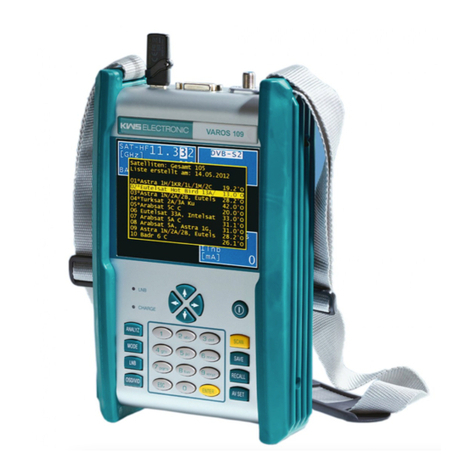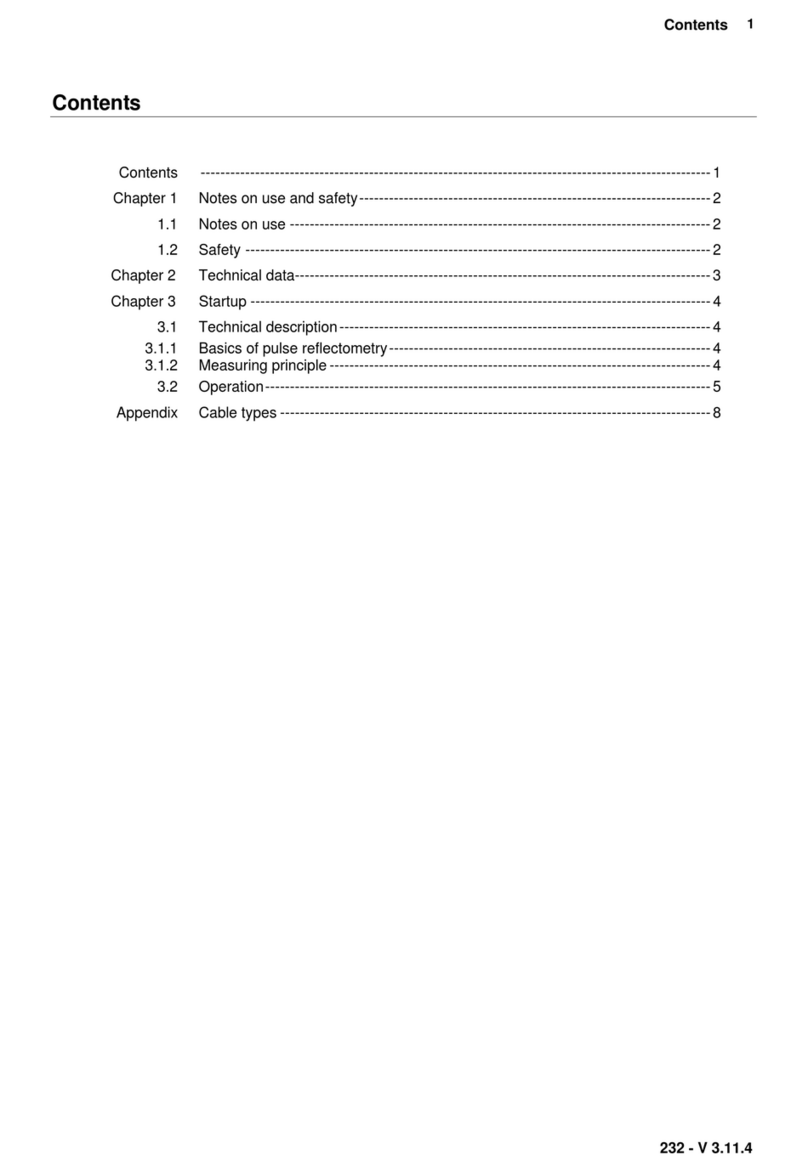
2 Contents
10713 Vxx.11
DOCSIS parameters .......................................................................................................................... 36
6.2.2.2.1
Scan ................................................................................................................................................... 376.2.2.2.2
BER measurement (Bit Error Rate).................................................................................................... 376.2.2.2.3
MER measurement (Modulation Error Rate)...................................................................................... 386.2.2.2.4
Noise Margin (NM) ............................................................................................................................. 386.2.2.2.5
PE measurement (Packet Error) ........................................................................................................ 386.2.2.2.6
Constellation diagram......................................................................................................................... 386.2.2.2.7
6.2.2.3 DVB-T................................................................................................................................................. 39
Selection of the COFDM bandwidth (channel bandwidth) ................................................................. 396.2.2.3.1
Scan ................................................................................................................................................... 406.2.2.3.2
DVB-T parameters ............................................................................................................................. 406.2.2.3.3
Further DVB-T parameters................................................................................................................. 416.2.2.3.4
BER measurement (Bit Error Rate).................................................................................................... 416.2.2.3.5
MER measurement (Modulation Error Rate)...................................................................................... 426.2.2.3.6
Noise Margin (NM) ............................................................................................................................. 42
6.2.2.3.7
Impulse response............................................................................................................................... 426.2.2.3.8
PE measurement (Packet Error) ........................................................................................................ 446.2.2.3.9
Picture and sound check.................................................................................................................... 446.2.2.3.10
Remote supply ................................................................................................................................... 446.2.2.3.11
Constellation diagram......................................................................................................................... 446.2.2.3.12
6.2.2.4 DVB-T2............................................................................................................................................... 45
Selecting the COFDM bandwidth (channel bandwidth) ..................................................................... 456.2.2.4.1
Scan ................................................................................................................................................... 466.2.2.4.2
DVB-T2 parameters ........................................................................................................................... 466.2.2.4.3
Further DVB-T2 parameters............................................................................................................... 476.2.2.4.4
Selection of PLPs (Physical Layer Pipes) .......................................................................................... 476.2.2.4.5
BER measurement (Bit Error Rate).................................................................................................... 486.2.2.4.6
MER measurement (Modulation Error Rate)...................................................................................... 486.2.2.4.7
Noise Margin (NM) ............................................................................................................................. 48
6.2.2.4.8
Impulse response............................................................................................................................... 496.2.2.4.9
PE measurement (Packet Error) ........................................................................................................ 506.2.2.4.10
Picture and sound check.................................................................................................................... 506.2.2.4.11
Remote supply ................................................................................................................................... 506.2.2.4.12
Constellation diagram......................................................................................................................... 506.2.2.4.13
6.2.2.5 DTMB ................................................................................................................................................. 50
Scan ................................................................................................................................................... 516.2.2.5.1
DTMB parameters.............................................................................................................................. 526.2.2.5.2
BER measurement (Bit Error Rate).................................................................................................... 536.2.2.5.3
MER measurement (Modulation Error Rate)...................................................................................... 536.2.2.5.4
Noise Margin (NM) ............................................................................................................................. 536.2.2.5.5
Impulse response............................................................................................................................... 536.2.2.5.6
PE measurement (Packet Error) ........................................................................................................ 546.2.2.5.7
Picture and sound check.................................................................................................................... 54
6.2.2.5.8
Constellation diagram......................................................................................................................... 546.2.2.5.9
Remote supply ................................................................................................................................... 556.2.2.5.10
6.3 Level measurement............................................................................................................................ 55
6.3.1 Acoustic level trend ............................................................................................................................ 55
6.3.2 Level measurement with DVB-C or DOCSIS ..................................................................................... 55
6.3.3 Level measurement with analog TV (ATV) ........................................................................................ 55
6.4 Diagrams............................................................................................................................................ 56
6.4.1 Operation............................................................................................................................................ 56
6.5 Blind Scan .......................................................................................................................................... 57
6.5.1 Starting a new scan............................................................................................................................ 57
6.5.2 Aborting a scan manually................................................................................................................... 57
6.5.3 Exporting the channel list ................................................................................................................... 58
FM (VHF) Measuring Range ........................................................................................59Chapter 7
7.1 Frequency input.................................................................................................................................. 59
7.2 Sound reproduction............................................................................................................................ 59






























